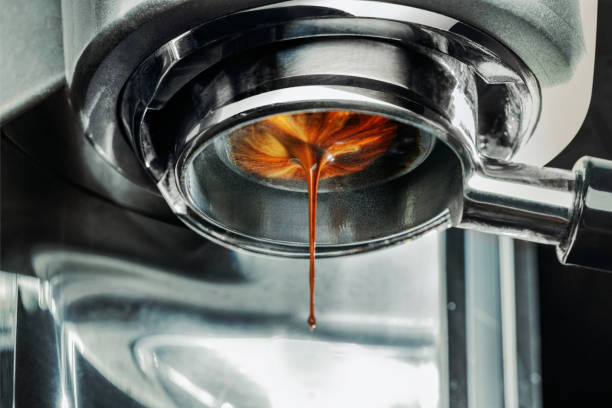Coffee is one of the most consumed beverages worldwide, so its many known and unknowable characteristics are constantly being studied. The topic of whether coffee is acidic or basic is one of the most frequently posed scientific coffee questions, so we’ll address that now.
How much acid is actually present in coffee? From the location of the beans’ cultivation to their roasting and brewing processes, a number of factors influence the acidity levels in your cup. Here are some reasons why acidity in coffee is important.
Acid Vs. Acidity
One of the essential elements that determine a coffee’s flavor is acidity. The term can be a little confusing, but typically when we talk about food, acidic isn’t a desirable quality. In fact, hear the word “acid” you almost immediately think of a food or drink that’s going to be sour in your mouth and hard on your stomach.
However, this is not the case when discussing acidity in coffee because in this case, acidity is a desirable quality. In fact, when coffee professionals talk about “acidity”, they are talking about the presence of certain acids that influence the taste of coffee. Acidity is a flavor note, not a measurement of the amount of actual acid in something.
Because “acidity” is used to talk about how coffee tastes, you may have already heard this flavor note being referred to in other ways; words that are a bit more indicative of the flavor itself. “Bright” is a common word used to refer to coffees with good acidity.
Is Coffee An Acid Or a Base?
You already know that some substances are acids and some are bases if you paid attention in tenth-grade chemistry.
The pH of a substance determines whether it is classified as an acid or a base, without getting too technical about atoms and molecules.
Bases are chemical substances that are alkaline and have a pH of 7.0 or higher. Less than 7.0 is the pH range for acids. Bases change the color of red litmus paper to blue when dissolved in water. Blue litmus paper turns red when exposed to acids.
Coffee is classified as an acid rather than a base because its acid content ranges from 4.85 to 5.10 on the pH scale. Coffee is acidic, so despite how delicious it may be, it can be challenging for people with certain medical conditions to enjoy.
A cup of coffee with a pH of 5.0 is perfectly acceptable for the majority of people to consume. Other popular drinks have much higher acidity levels in comparison. A pH of 3.3 to 4.2 is typical for orange juice. The pH of sodas like Cherry Coke and Coke has about 2.5. Battery acid has a pH of 1.0, just in case, it’s interesting to mention.
Coffee is therefore perfectly safe to drink, having an average pH value of 5.0. Although it is on the acidic side, it is closer to being a base than you might think when compared to other common beverages.

What Types of Acid Does Coffee Contain?
Chlorogenic Acid
This acid aids in lowering blood sugar levels and decreasing the absorption of carbohydrates. found in potatoes, kiwi, kiwifruit, kiwifruit, apples, and eggplant.
Quinic Acid
improved antioxidant effects and anti-neuroinflammatory properties. found in some kinds of berries, apples, and peaches.
Citric Acid
This acid, which is present in lemons, limes, grapefruits, and oranges, can destroy harmful bacteria and preserve various types of food.
Acetic Acid
is the primary component of vinegar, which is used in many condiments and snack foods, and it serves as a natural preservative that can kill bacteria.
Lactic Acid
This acid is present in foods that are fermented, like yogurt and pickles, and it aids in the better digestion of lactose.
Malic Acid
Found in apricots, cherries, pears, plums, and other fruits; aids in removing dead skin cells from the body and boosting saliva production.
Phosphoric Acid
This acid supports kidney function and aids in the formation of strong teeth and bones when combined with calcium. Meat, beans, chicken, eggs, and fish all contain it.
Linoleic Acid
lowers cholesterol levels, strengthens the heart and raises blood pressure. found in nuts, seeds, soybean oil, sunflower oil, and soy oil.
Palmitic Acid
an acid that helps the body store energy while supporting cellular function. Meat, dairy products, and coconut oil all contain this saturated fat.
How To Reduce Acidity With Certain Brewing Methods
You can modify the degree of acidity in your coffee in addition to the type of beans you select by changing the brewing method.
There are numerous ways to brew coffee.
- Traditional drip coffee makers
- Espresso machines
- Pour-over Chemex
- Stovetop method (like Moka pot)
- Make cold brew in the fridge
- Use a French press
- AeroPress
Each one is distinctive, and they all have an impact on how your coffee tastes.
The amount of acid that ends up in your coffee can vary greatly depending on the brewing process and how finely or coarsely you grind your beans.
Your coffee will be more acidic the shorter the brewing process.
The flavor from the coffee grinds is actually extracted when you brew a cup of coffee. You’ll taste less acid in your cup the longer the extraction process lasts.
Final Words: Weakly Acidic Beverage
The coffee has a pH level of around 5, making it a weakly acidic one. Since it contains both acidic and alkaline elements, coffee has a very complex chemical makeup. Furthermore, coffee’s acidity is unaffected by the alkaloid caffeine.
For coffee to have flavor and taste, acidity is essential. In fact, coffee tastes flat when there aren’t enough acidic compounds. By adjusting the roasting and brewing procedures, you can control the acidity. But that’s not all; throughout the course of coffee’s lifecycle, a variety of natural and human-controlled factors interact to produce the acidity that we finally taste.




